I just noticed that a customer of mine recently posted some info on his blog trying to explain the Mahogany naming mess . This bit of info may help also.
Mahogany: Which one is the real thing? September 12th, 2010
All photos use 
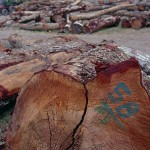 Mahogany Logs
Mahogany Logs
Any discussion of Mahogany may be complex and confusing because there has been a lot of change in the past few years and the term “mahogany” has been applied to several woods for marketing purposes. There is no botanical connection among these different woods. I will try to keep this short and to the point but there is a lot of information available. Click the heading name for detailed information in the Wood Library.
Today the most widely distributed and used “mahogany” in the marketplace is African mahogany.
African Mahogany, Khaya spp
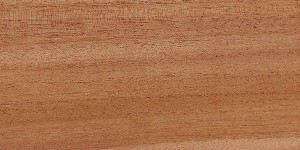 African Mahogany wood grain scan
African Mahogany wood grain scan
African Mahogany has been on the US market for a long time but its use dramatically increased after 2003 when South American Mahogany, Swietenia macrophylla was listed in CITES (Convention on International Trade in Endangered Species of Wild Fauna and Flora). African Mahogany became the most available and affordable substitute. Today this is the most widely used wood called “mahogany”. It is not related to South American Mahogany but has a similar look and even though it is more brittle it has acceptable working properties.
There are several species of Khaya. The most acceptable as a substitute is K. invorensis. This species makes up most of the African mahogany on the international market. While this is the most desirable species it maybe sold in a mixture with other Khaya species including K. anthotheca , K. grandifoliola , and K. senegalensis. Origin of lumber can sometimes help identify specific Khaya species. This may be valuable information since differences in some properties can be significant. Supplies of African Mahogany lumber are abundant, and it can be found in a wide range of sizes at moderate prices. It is also available in veneer and plywood from many lumber suppliers. African mahogany is frequently used to replace South American mahogany because it is cheaper, easier to obtain, more abundant and can be used for the same applications.
In general this wood works quite easily in all operations, but if the grain is interlocked it may be difficult to surface without tearing .
Here are ther woods that may be named mahogany or marketed as a mahogany substitute:
Sapele, Entandrophragma cylindricum
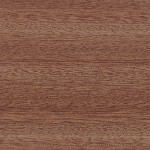
Sapele wood grain scan
A much larger African tree and more widely distributed than Khaya. It is a good working timber with a finer grain texture than Khaya. Some wood experts believe Sapele will become the African mahogany of choice in the future.
Sapele features a little more density than Khaya and therefore better working properties. And (arguably) it’s much nicer looking, certainly more consistent in color.
Sipo, Entandrophragma utile
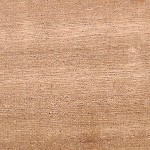
Sipo wood grain scan
Another good working wood from Africa but grows more slowly and is more sparsely distributed than Sapele. Sipo is the European favorite. It just hasn’t garnered much popularity in the U.S.; however sipo is a wood that’s worth using in place of mahogany when the price is right.
This, too, gets praise as a nicer alternative to African mahogany (Khaya).
South American Mahogany, Swietenia macrophylla
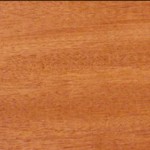
Genuine mahogany wood grain scan
This wood is from Central or South America and may be named Mahogany, Honduras Mahogany, South American Mahogany, American Mahogany or Genuine Mahogany. For the past 200-300 years this species was the choice of furniture makers. Originally stock was harvested from Honduras; however, during the twentieth century Brazil provided most of the material but the name Honduras Mahogany continued to be used. Most current stock comes from Peru or Central America.
Effective Nov 15, 2003 Mahogany came under the international trade restrictions for items listed in CITES Appendix II. Appendix II includes species not necessarily threatened with extinction, but in which trade must be controlled in order to avoid utilization incompatible with their survival. Consequently, additional permits are required to harvest and export the wood, supplies of lumber have decreased and the price has increased dramatically. South American Mahogany will continue to be available but supplies will be limited and prices will be much more than they were just a few years ago.
For more information on CITES go here:
Welcome to CITES.
Genuine Mahogany ranks among the finest cabinetry wood in the world. Its working characteristics are outstanding for all processes, including cutting, shaping, turning, and sanding. The grain is moderately open so filling is required to obtain a glass smooth finish. Since the CITES listing the woodworking community continues to search for a substitute for Swietenia macrophylla but no other wood has the exceptional grain and working properties.
Cuban Mahogany, Swietenia mahagoni
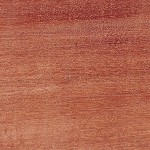
Cuban Mahogany wood grain scan
Early American furniture makers preferred this species. And some modern woodworkers may recall a time when this was the “standard” mahogany.
Today, though, there is no commercial source for this wood but some comes on the market from time to time due to hurricane damage. The supply is short and infrequent because of this
Philippine Mahogany, Shorea spp.
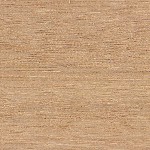
Philippine / Luan mahogany wood grain scan
This term is not used much anymore but was quite common 50 years ago. This large family of trees produces wood with somewhat of a mahogany look, it is widely distributed throughout the Pacific islands and is inexpensive.
You may know this wood as
Meranti or
Lauan, as these are the names most often used today.
In general, though, its working characteristics are less than stellar.
Lyptus, a plantation hybrid of Eucalyptus
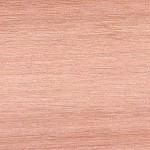
Lyptus wood grain scan
This species has been developed in South America and is marketed by Weyerhauser as an environmentally friendly alternative mahogany substitute. As a plantation grown wood, the use of Lyptus shifts demand away from old growth forests, which we like to keep around for biodiversity’s sake. The fast growth rate (harvesting can happen in just 15 years) ensures that supply stays high, and costs stay low. The plantation environment also allows for precise control of soil chemistry, tree spacing, and other factors affecting growth, resulting in the highest quantity of quality wood from the smallest space.
Other woods
Santos mahogany, Andiroba mahogany, Mountain mahogany and others, are not related to either Swietenia or Khaya, but are attempts to pickup on the mahogany name or promote a wood as a mahogany substitute. I expect we will see more of this in the future and the confusion will increase.
For your next project consider African Mahogany. It is economical, works well and takes a fine finish. If price is no issue, consider Genuine Mahogany, Swietenia macrophylla, by what ever name it is available; otherwise, consider Sapele or Sipo. Try Lyptus for a unique and sustainable wood. South American Mahogany is best for outdoor applications.
Please tell us about your experience with Mahogany or just add a comment.
5 Responses to “Mahogany: Which one is the real thing?”
 Alvaro says:
Alvaro says:
July 30, 2009 at 11:35 pm
Keith,
Thanks for such extensive report on Mahogany, and the final outcome is only to be respected and totally true. South American Mahogany ( Swietenia Macrophylla ) is the REAL wood. Over 300 years of preference by most renouned wood workers avail to it.
Every time I have used mahogany have had no troubles at all, whatever was done would end up in a real work of art, for it´s color, touch and general looks.
It is very good to have stopped abusive logging of this fine specie from our forests, which along with Spanish Cedar ( Cedrella odorata) was being logged as if they were the only wood species in the Amazon, contrary to the fact that such rainforest is the habitat for almost 2,500 forest species, of which only 30/35 are actually being used. This fact however, has saved our forest of severe abuses, since some years from today, the rate of logging did not even reach the 1 ( one ) cubic meter per hectare, on account that ONLY high priced lumber was sought after.
Today, Mahogany is not available as it was before, and prices have scalated, but it is important to respect Cites and the Peruvian Government, so that standing stock is allowed to mature, expand for future generations, while big milling companies will have to start some re-forestation ( planting ) if they want to continue offering such nature´s wonder wood, only then they will actually realize the many years it takes nature to produce such fine wood.
With cordial regards
Alvaro Carpio
Reply
 Keith Stephens says:
Keith Stephens says:
July 31, 2009 at 1:37 pm
Alvaro, thanks for posting your comments. Are you in South America?
For many years I have supported using lesser known species as a way to add value to the forest and reduce pressure on the more popular species. That is one reason we stock over 100 different species.
While no other wood works quite like South American Mahogany the African species are good alternatives. I have become quite a fan of Lyptus. I have built several projects with Lyptus and we used it for our master bath cabinetry. It is not Mahogany but is a very nice timber with its own look and working characteristics.
Reply
 Horst Hohoff says:
Horst Hohoff says:
August 5, 2009 at 3:40 pm
The question was “Which is the real thing?”. And IMO it has not been answered.
According to WIKIPEDIA the real thing is Swietena mahagony, which is here listed under
“Other woods that may be named mahogany or marketed as a mahogany substitute”.
http://en.wikipedia.org/wiki/Swietenia_mahagoni
http://en.wikipedia.org/wiki/Mahogany
Reply
 Mark Stephens says:
Mark Stephens says:
August 6, 2009 at 12:55 pm
There you go Horst! The idea wasn’t so much that our posting would definitively answer the question, but that perhaps one of our readers would point out which one they thought is the “real deal.”
That’s one for Swietenia Macrophylla, and one for Swietena mahagony.
The point here is to show that what we’ve come to love as mahogany has become scarce, expensive, or threatened – and the industry has turned to a number of different species to fill the hole. In your link, I find this interesting: “Mahoganies may refer to the largest group of all Meliacae. the timbers yielded by the fifteen related species of Swietenia, Khaya and Entandrophragma.” That’s reflected here.
Reply
 Alvaro says:
Alvaro says:
August 14, 2009 at 12:55 am
I believe that both Swietenias, Mahogany & Macrophyla, are the closets belonging to the same genus, having a common origin, with slight differences possibly on account of land, habitat, etc., but sharing the same continuous forests of the Americas.
We are about to finish an inventory of species located at a 160,000 hectares lot located in Loreto, Peru, alloted to my partner some years from now. It´s been a tough job so far and we will still have lots of work to do in order to have the results in blk & wht. I am sure very nice surprises will appear, and that will allow us to provide a sound sustainable management of that area, including non forest products.
Keith mentions Liptus, and I am starting to investigate a small land we have north of Lima, with 900 HUGE Eucaliptus trees ( Believe they´re E. Saligna ), real old growth plantation trees that will soon be lacking of space on account of their sizes. I have read that old/mature Eucaliptus trees usually yield quality lumber, and will have a chance to verify such statement in a near future.
Finally, we are all waiting to see what kind of wood species will be arriving to your headquarters soon, direct from Iquitos, via the Amazon river. Congratulations !!
Cordial regards to all wood-lovers
Alvaro
Reply




 Reply With Quote
Reply With Quote Geneva, 11 November 2003 – Internationally agreed trade regulations for big-leaf mahogany will enter into force on 15 November. This tropical timber generates over 100 million dollars a year in export sales, making it one of the world’s most valuable forest products.
Geneva, 11 November 2003 – Internationally agreed trade regulations for big-leaf mahogany will enter into force on 15 November. This tropical timber generates over 100 million dollars a year in export sales, making it one of the world’s most valuable forest products.









